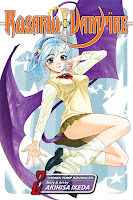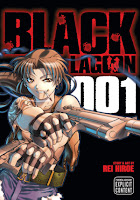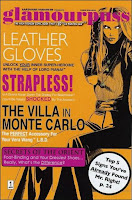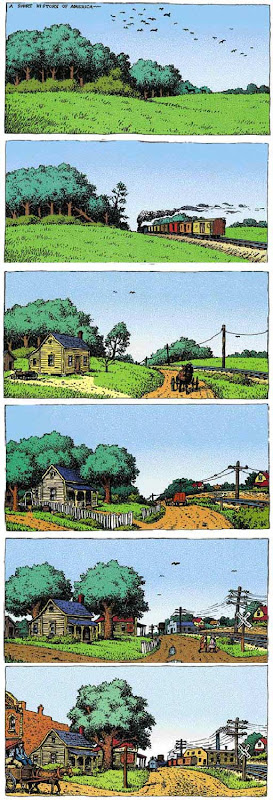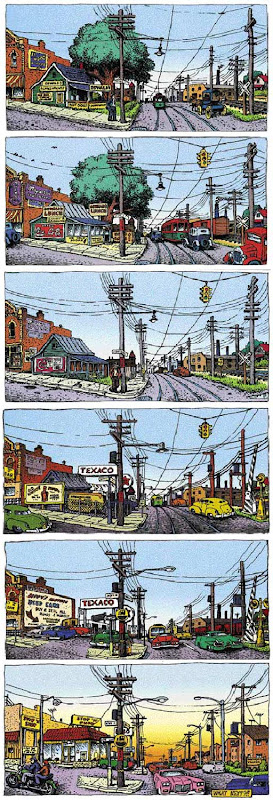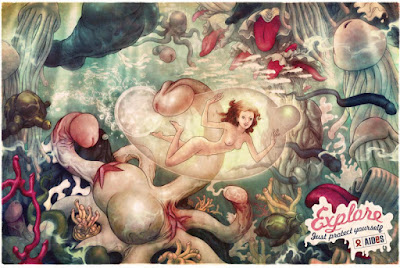Here's a number of reviews I've been meaning to write, but haven't had the time till now.
Parasyte Vol. 3
The core of
Hitoshi Iwaaki's engrossing
body horror series is fairly simple, if not particularly original. Teenage protagonist
Shinichi Izumi forms an alliance of convenience with an alien parasite who has replaced his right hand, in order to defend against other hostile parasites. However some parasites are interested in observing this alliance. In this volume Shinichi and his parasite
Migi encounter
Hideo Shimada, a parasite who enrolls at Shinichi's school. He expresses a desire to integrate into human society. Meanwhile the Japanese government has become aware of the alien attacks, but has little to go on until they can capture a specimen.
Iwaaki's art isn't particularly polished. His backgrounds are perfunctory, and his figures are a bit stiff. Most characters' facial expressions don't stretch beyond surprise, fear, and anger. Not that they were written with any particular depth in the first place. Ironically the parasites that have taken over a human host develop far more interesting personalities, and their motives drive the conflict of the story. There's something a little off about the symmetry in the faces that Iwaaki renders. Intentional or not, this weakness actually helps make the parasites and Shinichi look far more malevolent. But while humanity may not be Iwaaki's forte, the depictions of unleashed parasites going on a killing spree are where he truly excels. The bloody confrontation at the end of this volume is a real visual feast and not for the easily upset.
Pretty Face Vol. 6
The final volume of this series brings the story to a very sudden end. The premise (which I discussed in my vol. 1
review) exemplifies
shonen manga's ability to both titillate and thoroughly creep out the target audience - the
fan service, while no more egregious than any other manga, involves gender-bending male hero
Rando Masashi either staring at his unsuspecting female classmates, or the reader witnessing the androgynous Rando coming close to being exposed in front of said classmates.
The series has put Rando in most of the typical situations readers have to expect of the genre: The beach, gym class, hot springs, sports fests, sleepovers etc. Several supporting characters have been introduced, but dropped instead of being developed. Midway through the series, there was an attempt to get the whole 'find the missing sister Yuna' plot thread moving. But after running into a dead end, it reverted to the usual episodic format. This inability to follow-up on this plot thread may be the reason why
Yasuhiro Kano ended Pretty Face. Instead
Yuna Kurimi unexpectedly shows-up two-thirds into vol. 6, and the story rushes to its conclusion, leaving a few plot holes along the way, and not quiet resolving every issue.
Ultimately, whether readers will find Pretty Face endearing or disturbing depends on how far they can buy into the idea of a virginal teenage boy swearing undying devotion to a girl who barely knows him and thinks he's dead. Admittedly the sheer weirdness of the premise and the slickness of Yasuhiro Kano's art kept me from dropping it.
Rosario + Vampire Vol. 1
Rosario + Vampire Vol. 2
This is a by-the-numbers male fantasy.
Shonen nonentity
Tsukune Aono, by some twist of fate, enrolls in a school for monsters. He only figures this out after attending his first homeroom class. Naturally desiring to preserve his life, he decides to withdraw. But
Moka Akashiya, the popular girl he has a
meet cute with, becomes predictably attached to him, and convinces him to stay. Moka is an extremely powerful vampire, but her true abilities are suppressed by a crucifix she wears on her neck (Every student is required to remain in human form when on campus). Tsukune discovers that under duress he is the only one who can remove the cross, which is a good thing as he's in constant danger of being torn apart by his unsuspecting classmates, and sometimes by the faculty. For her part the lonely Moka considers Tsukune her first true friend. But as they settle into their daily routines, a circle of rivals/friends develops into the usual web of possible
romantic entanglements; The twist being that most of the cast are supernatural monsters.
Author
Akihisa Ikeda isn't the best artist I've seen, but he's skilled enough to draw the attractive female-centric cast and the requisite up-skirt panty shots. The manga is literally a
monster-of-the-week series. Tsukune and Moka get involved in a certain school activity, which puts them into conflict with an antagonist. Said antagonist turns into a monster, and Tsukune is forced to unleash Moka's vampiric powers. I should point out that Moka goes through a
Jekyll and Hyde personal transformation when she morphs into a full vampire. She also doesn't actually bite any of her opponents, but beats them into submission with roundhouse kicks. The 'necking' she reserves for Tsukune.
While Rosario + Vampire is a competent manga, it doesn't particularly stand-out. At least not yet.











